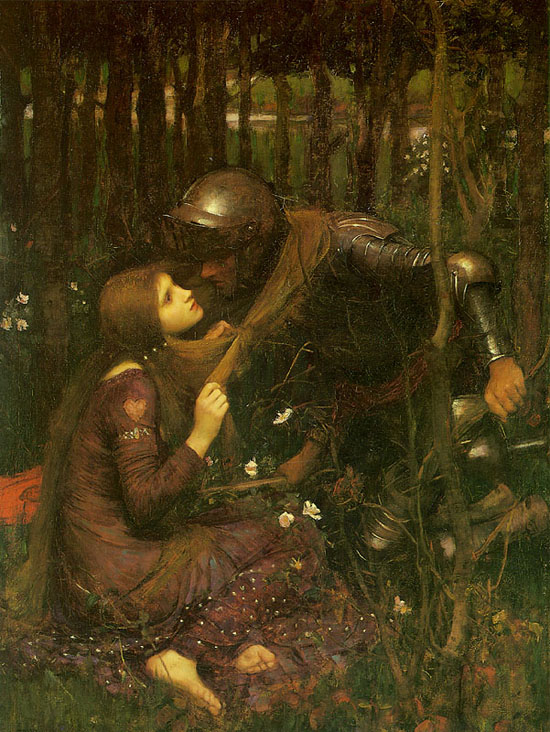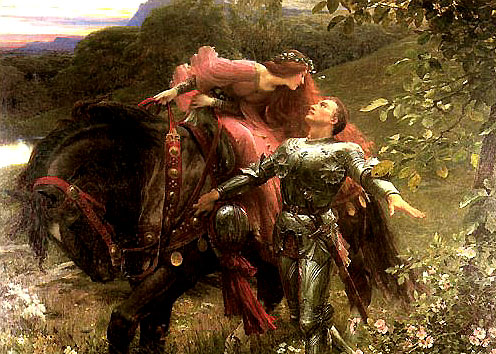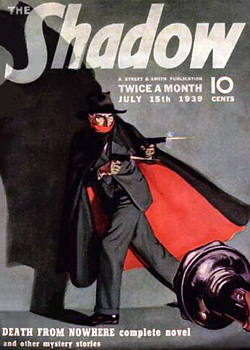I have always been drawn to Pre-raphaelite art.

To truly understand the style, I will give a quick Art History lesson. See, Michelangelo and Raphael were Masters, right? They were trained under the Renaissance artists who sought for perfection of form, light, proportion. Michelangelo and Raphael were trained that way but then 'matured' to an 'exaggerated extension' of realism. You can see this in the later painting of these two (and some others who followed), you will note exaggerated, out of proportion bodies, long awkward necks, strange inhuman shaped limbs. If you really take the time to look. The "Mannerists" painted in the style that Michelangelo and Raphael began. It was viewed as a natural progression of art coming out of the High Renaissance. Well, in 1848, a group of artists formed in England who viewed the High Renaissance style of realism more enlightening than the mannerism which followed. The subjects of the art of the Pre-Raphaelites tended to be stories from mythology, fairy tales, and King Arthur. They loved Medieval themes, since they felt that era was very spiritual and creative. They strove to create art that was purposeful... expressing a grand idea or thought.
Above is one of my favorite paintings. I have a small print of it. (would love to get a larger one eventually). It is haunting. Check out the realism in the fabric of her dress. The desperation in her eyes. The shine of metal. I could never tire of this painting. John William Waterhouse painted it, and he is probably my favorite artist of all time. I like him partly because I love to look at his work. But also because he paints literature. Poetry in particular.....Tennyson, Keats, Homer.
The Keats poem "La Belle Dame Sans Merci" was painted by several Pre Raphaelites.

O what can ail thee, knight-at-arms,
Alone and palely loitering?
The sedge has withered from the lake,
And no birds sing.
O what can ail thee, knight-at-arms,
So haggard and so woe-begone?
The squirrel’s granary is full,
And the harvest’s done.
I see a lily on thy brow,
With anguish moist and fever-dew,
And on thy cheeks a fading rose
Fast withereth too.
I met a lady in the meads,
Full beautiful—a faery’s child,
Her hair was long, her foot was light,
And her eyes were wild.
I made a garland for her head,
And bracelets too, and fragrant zone;
She looked at me as she did love,
And made sweet moan.
I set her on my pacing steed,
And nothing else saw all day long,
For sidelong would she bend, and sing
A faery’s song.
She found me roots of relish sweet,
And honey wild, and manna-dew,
And sure in language strange she said—
‘I love thee true’.
She took me to her elfin grot,
And there she wept and sighed full sore,
And there I shut her wild wild eyes
With kisses four.
And there she lullèd me asleep,
And there I dreamed—Ah! woe betide!—
The latest dream I ever dreamt
On the cold hill side.
I saw pale kings and princes too,
Pale warriors, death-pale were they all;
They cried—‘La Belle Dame sans Merci
Thee hath in thrall!’
I saw their starved lips in the gloam,
With horrid warning gapèd wide,
And I awoke and found me here,
On the cold hill’s side.
And this is why I sojourn here,
Alone and palely loitering,
Though the sedge is withered from the lake,
And no birds sing.
I read several interpretations. One of them deals with the knight's decision to forsake his real life and reality for an ideal of love that does not exist. Another interesting one was that the woman is a form of the femme fatale... deliberately destructive. A third idea was that he was under an enchantment of the imagination. And his real life wasted away in pursuit of a world that is not real.
I am not sure what I think, I do know that fairy tales always give a shadow of truth. Often a deep spiritual truth. I must ponder this some more... what do you think?
Another thing I really like about the poem is the reference to Pale Kings.... reminds me of Frodo in the Lord of the Rings putting on the Ring while the Nazgul are chasing him and he sees the Pale King... but that has nothing to do with this tale.







